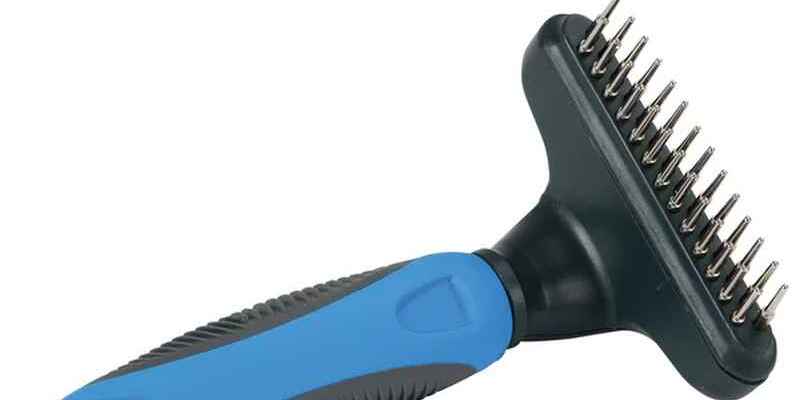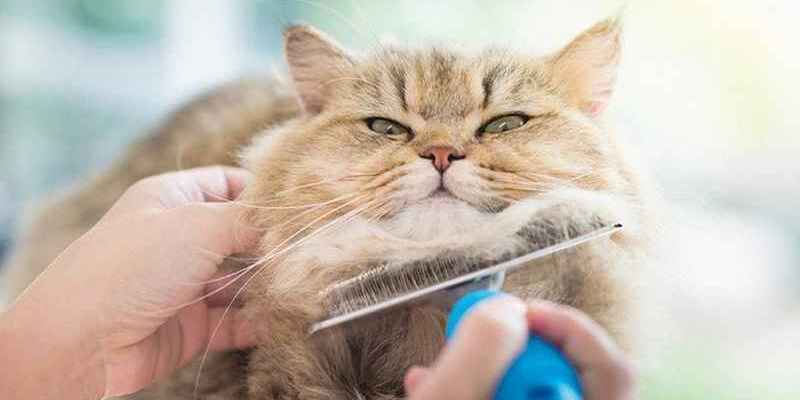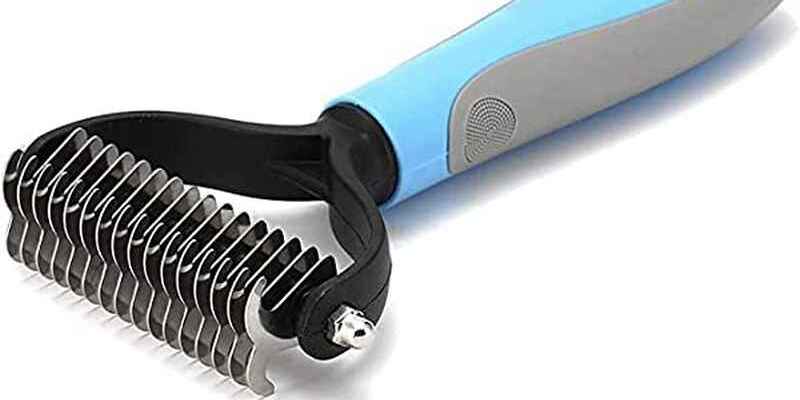
De-matting a cat is not enjoyable for either the cat or the human. While it is preferable to avoid matting in the first place, it is sometimes unavoidable. That is why it is always a good idea to be prepared, just in case. This guide will assist you in keeping your cat’s fur sleek and healthy. Mats are typically formed when dirt or dead skin cells become entangled in the fur. As a result, your cat may not be able to groom that area.
However, if your cat has been neglecting to groom, there may be an underlying issue that necessitates a trip to the vet. However, if everything is fine and your cat was busy playing in the dirt, there is a good chance he came home with matted fur. So, what do you do when this occurs? Simply put, you must first prepare your tools.

There are numerous types of de-matting combs on the market. The only thing we recommend is that you avoid using a wide brush and instead use a steel comb with thin bristles. This can give you more control and ensure that your cat is not in pain.
While this isn’t always necessary, and you don’t need to go out and buy a conditioning spray specifically for this, having it on hand is a good idea. This is especially useful for those hard-to-reach mats that refuse to go away no matter how hard you try. After all, we don’t want to irritate the cat’s skin.
It is preferable to try to comb through the mats, but if they are really stuck in there, cutting the fur from that area is the best way to relieve your cat’s pain. However, you must ensure that the scissors have a blunt end to avoid nicking the skin.
If you don’t have talcum powder made specifically for cats, cornstarch will do the trick in a flash. This is simply to remove the moisture from the mat and de-mat your cat as painlessly as possible.
I don’t believe I need to explain why we require treats. Cats, in general, dislike the combing experience, so you’ll have to bribe your cat to keep him still while you work on his fur.

The first thing you’ll need to do is set the tone. I know it sounds strange, but you must make your cat comfortable and select a time when your cat is not as hyper. And, while this may not be necessary depending on your cat, having an extra pair of hands is always a good thing.
Once your cat is at ease, begin by gently brushing its fur and locating the affected area. Then apply cornstarch or talcum powder to the affected area. Once fully soaked in powder, use a fine-toothed comb to begin brushing it through from the ends. Alternatively, if it is heavily matted, you can use scissors.
It may be unsightly to have bald patches on your cat, but their health is always more important.

What you need to do is use a comb to separate the matt from the skin while being careful not to pull on the skin. After that, use the scissors to cut off the stubborn mats. In this case, talcum powder will come in handy.
All that remains is to thoroughly brush the cat and all the dead fur away so that no more mats form in the future.
After that, the only thing left to do is reward them for their good behavior and send them on their way.

Brushing your cat daily, especially during shedding season, is the only way to avoid having to repeat this process. Short-haired cats, on the other hand, do not have this issue. Long-haired breeds, such as Persians, are prone to shedding, and this fur can become entangled and cause mats. While you don’t need to bathe your cat, if your vet recommends it, bathing once or twice a month isn’t a bad idea.
If your cat is in severe pain as a result of the mats and you are unable to help him, it may be time to take him to the vet. The vet will usually give your cat a mild local anesthetic so he doesn’t fuss and the procedure isn’t too painful for him.
It is always much easier to avoid a problem than it is to solve it later.